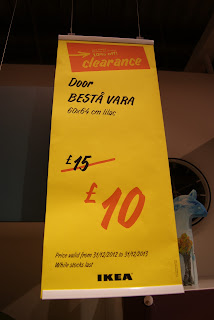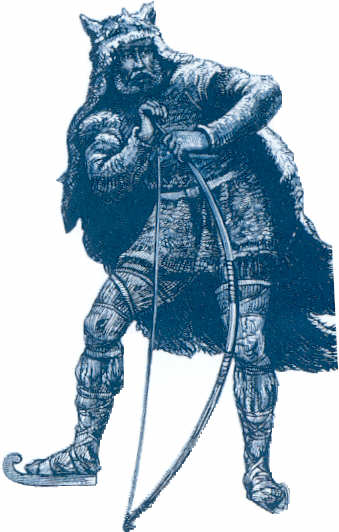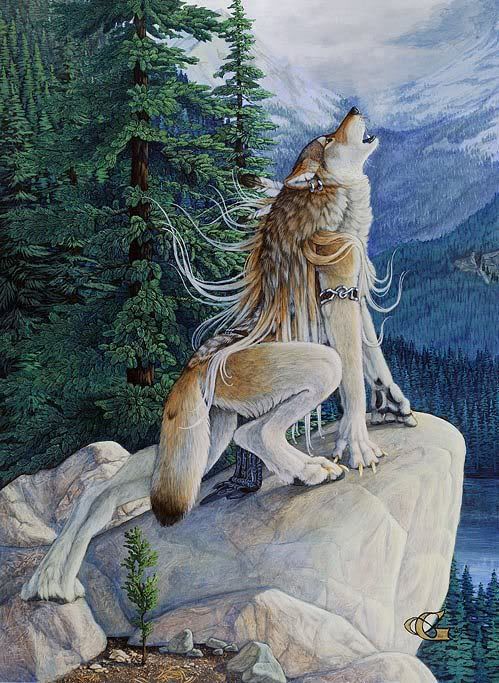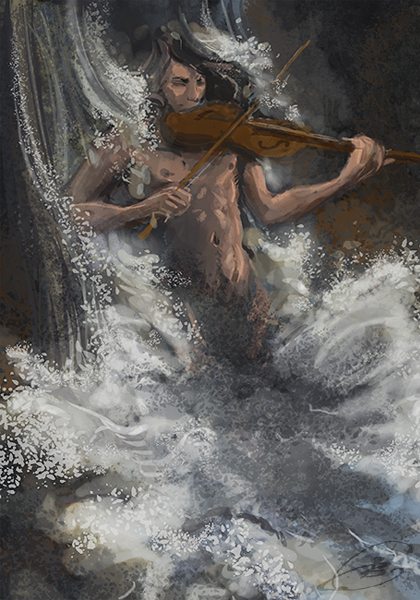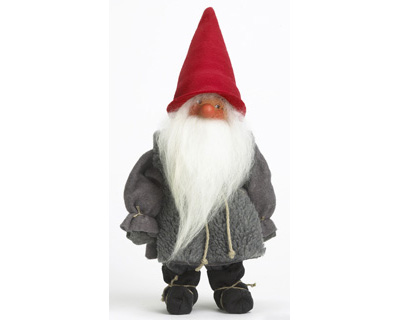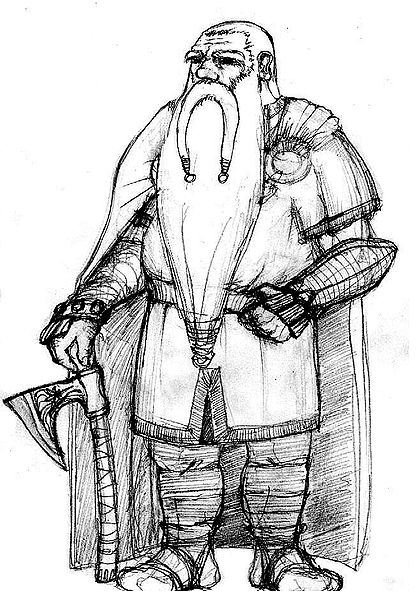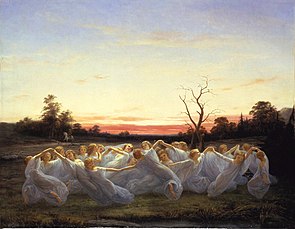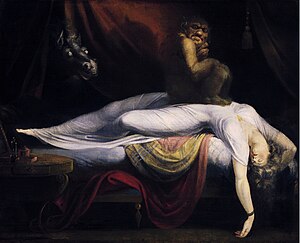I had a look at IKEA's website, and found it to be really easy to navigate your way around. The let down about the website was the fact it was really plain and boring and meaninglessly cluttered in several places. I also really didn't like how the homepage was laid out with the big red banner talking about 'The Winter Clearance' that was now on, I find it really vulgar and hard to look at.
I also found that all IKEA warehouses and retail outlets all follow the 2 colours of the IKEA logo (blue and yellow). I think this is quite interesting, because it makes the logo stick in your mind and you remember the general branding and identity of the company due to the consistency.
The colour of the Swedish flag is the same as the colours used in the IKEA logo, which I believe was probably quite intentional!
Some General Information About IKEA
IKEA is a privately held, international home products company that designs and sells ready-to-assemble furniture such as beds, chairs, desks, appliances and home accessories. The company is the world's largest furniture retailer. Founded in Sweden in 1943 by 17-year-old Ingvar Kamprad, who later became one of the richest people in the world, the company's name is an acronym comprising the initials of the founder's name (Ingvar Kamprad), the farm where he grew up (Elmtaryd), and his hometown (Agunnaryd, in Småland, South Sweden). The company is known for its modernarchitectural designs on various types of appliance and furniture, often associated with a simplified eco-friendly interior design.
In addition, the firm is known for the attention it gives to cost control, operational details and continuous product development, allowing it to lower its prices by an average of two to three percent over the decade to 2010, while continuing its global expansion.
As of October 2011, IKEA has 332 stores in 38 countries. In fiscal year 2010, it sold $23.1 billion worth of goods, a 7.7 percent increase over 2009. On February 17, 2011, IKEA announced its plans for a wind farm in Dalarna County, Sweden, furthering the furniture giant's goal of running on 100 percent renewable energy. In mid-August 2012, the company announced that it will be establishing a chain of 100 economy hotels in Europe but, unlike its few existing hotels in Scandinavia, they will not carry the Ikea name nor will they use Ikea furniture and furnishings - they will be operated by an unnamed international group of hoteliers.
The IKEA website contains about 12,000 products and is the closest representation of the entire IKEA range. There were over 470 million visitors to the IKEA websites in the year from September 2007 to September 2008. IKEA is the world's third-largest consumer of wood, behind The Home Depot and Lowe's.
In 2009 IKEA caused a flap in the graphic design world when it changed the typeface used in its catalogue from Futura to Verdana, expressing a desire to unify its branding between print and web media. The controversy has been attributed to the perception of Verdana as a symbol of homogeneity in popular typography.
Time magazine and the Associated Press ran articles on the controversy including a brief interview with an IKEA representative, focusing on the opinions of typographers and designers. Design and advertising industry-focused publications such as Business Week joined the fray of online posts. The branding critic blog, Brand New, was one of those using the "Verdanagate" name. The Australian online daily news site Crikey also published an article on the controversy. The Guardian ran an article asking "IKEA is changing its font to Verdana – causing outrage among typomaniacs. Should the rest of us care? Absolutely." The New York Times said the change to Verdana "is so offensive to many because it seems like a slap at the principles of design by a company that has been hailed for its adherence to them."
Random Facts About IKEA
Source For Information
- In September 2004, when IKEA offered a limited number of free $150 vouchers at the opening of a new store in Jeddah, Saudi Arabia, three people were crushed to death in a stampede that followed the store's opening.
- In January 2009, just before the new store opened in Southampton, the MV Red Osprey ofRed Funnel was re-painted in an entirely yellow and blue livery to celebrate the opening of the new IKEA store in Southampton. This is the first time a Red Funnel ferry has been re-painted out of its own red and white colour scheme.
- In September 2010, IKEA launched an advertisement for UK & Ireland called "Happy Inside" which had 100 cats lying on IKEA furniture in the flagship IKEA store in Wembley, London.
- Rather than being sold pre-assembled, much of IKEA's furniture is designed to be self-assembled.
- Many stores have a play area, named Småland (Swedish for small lands; it is also the name of the province of Sweden where Ingvar Kamprad was born).
- Ikea has 287 stores in 26 countries. It has none in South America or Africa but is planning one in Cairo, Egypt, soon.
- The first Ikea store in the UK was opened in 1987 in Warrington.
- 212 million copies of this year’s Ikea catalogue have been printed, in 29 different languages, making it twice as widely distributed as the Bible.
Primary Research Into IKEA
During the Christmas holidays, I decided to take a trip to IKEA and have a look around one of Britain's IKEA stores, as I had never actually been to one before! I went with Joe and Sarah to the IKEA in Birstall, just outside of Leeds and as soon as you arrived you were greeted with the bold yellow and blue colours of their logo and the words IKEA.
Everything around the store that contained any sort of information or price, etc was colour co-ordinated with the logo. I also noticed that all their adverts and sales signs constantly used the colours red, yellow and black as they are really bold and bright colours that stood out against the modernist furniture within the rooms, and easily grabbed your attention.
Another thing that I noticed with the IKEA adverts instore, was that everything was laid out in sets of three or more, especially when they were advertising discounts, cheap prices or sales happening on that day or within that area of furniture.
The one thing that I found when walking around IKEA was the fact that you had to go past each and every show room before you got to the exit. For a customer who just wants to go there and buy something at the beginning of the store, this could be found quite irritating, however I think it's a really clever way of getting the consumers to try out different show rooms and pieces of furniture, and could possibly persuade someone to buy something that they didn't set out to get in the first place, which is a really sly way of up-selling.
However, the way that they have organised IKEA makes it really easy to get around, and you can even find maps on your way around the store, and they have totally utilised their space in the way that the consumption of goods is guiding you around like a journey, in the way that you're made to look in different areas through an organised route layout. You can even pick up a map to take around with you so that you don't get lost on your ventures.
One design feature that I really liked in the show rooms, was when they wrote information onto the walls in the show rooms. I thought this was quite a clever way of using the space given in the warehouse, and it was also aesthetically pleasing and modernist which compliments the modernist design of the furniture.
As soon as we entered IKEA, I noticed how many labels there were scattered here, there and everywhere, giving information on the types of furniture you were viewing and trying out and where you could find them in the warehouse at the end of the store. Each label was consistent in design, being that they used the same font and colour scheme throughout.
I thought it was quite interesting how every design had it's own name, for example Billy Bookshelf. This was really different to what I was used to at other homeware stores, and gave IKEA a certain uniqueness. I also found it intriguing how all the books that were placed in the show bookshelves were Swedish.


The warehouse section of IKEA, where you could pick up all of your flat packed furniture, ready to take home and build yourself, was quite different to all of the showrooms you had previously encountered. It was extremely well organised and easy to get around, like the rest of the store, but you didn't have anything eye-catching in the room to encourage you to buy the products, as you should have already chosen what you liked before you arrived there! The warehouse section was huge and filled with thousands of boxes of furniture, felt a bit like we were workers there rather than customers.
I noticed that once you started looking at all of the labels around the warehouse, you could easily find what furniture you were looking for as they linked back to the labels you read in the show rooms. I think this is really cleverly organised and put together, as the whole store feels like one big catalogue that you find your way around, and is similar to the way Argos works, in the use of catalogue numbers and names that you write down previously so that you can find the product you wish to purchase with ease. There were also computers at the entrance to the warehouse, so that you could see if your product was in stock and it also gave indications as to where you could find said product.
After all the shopping and cruising around IKEA, we were all pretty hungry and tired, so decided to settle down in the IKEA restaurant and treat ourselves to some Swedish 'scran'. Even the way the restaurant was set out was extremely Modernist in the way that form follows function. It was easy to navigate around and understand, but wasn't exactly the most aesthetically pleasing place to eat in.
We all dined upon some traditional Swedish meatballs, with Lindon Berry juice and chocolatey puddings for afterwards. I also noticed that the food trays that you got from the restaurant were designed in a modernist and clean way, and the trolley that you could put the trays onto was well thought out and cleverly designed as you could easily carry your food to the tables without worry of spilling food or dropping your heavy trays!

Research Into Swedish Folklore
I thought that just researching into IKEA wasn't a very broad range of research, so decided to have a look at a few other Swedish related topics that didn't relate to IKEA but to Sweden itself.
Swedish folklore was collected in the 1630s by Gustavus Aldophus and was collected from Sweden, Norway, Denmark, Iceland, the Faroe Islands and the Swedish speaking parts of Finland.
In Scandinavian folklore, they believe in the old Gods but this isn't shown in high mythology beliefs. Some Gods include:
Odin; who is said to lead the Wild Hunt
Thor; who chases trolls with his thunder
Loki; a housegod of house fire
Ull; god of winter
Hœnir; helped Odin create humans
Hœnir, Ljóđar and Odin create the first humans, Askr and Embia.
The best way to understand Scandinavian folklore well, is to get to know the different characters within the tales and the creatures that often crop up. A large number of mythological creatures from Norse mythology are still alive, but are to be believed to be seen as followers of the Devil by Christianity. To scare these beings, all you would need was a piece of steel or iron (such as scissors or a knife), or salt and fire. The stories of how these beings live and interact with humans constitute the major part in Scandinavian folklore. When the folklores were collected and printed, many illustrators started to bring forward images of the creatures so that people could imagine them and absorb themselves within the tales.
Trolls
Most folktales were about trolls. Scandinavian trolls tend to be very big, hairy, stupid and slow to act. Any human was thought to be able to outwit a troll as long as they had courage and "presence of mind", and humans with strong enough faith were also believed to be able to challenge trolls to mortal combat.
Trolls are said to have a bear like temperament, which are ironically Swede's favourite pets as they are good natured when left in peace and savage when they are teased. Trolls come in many different shapes, sizes and form and are generally not very attractive to look at, as they can have as many as nine heads! However, they were often said to be able to change their appearance so that they could trick humans into doing whatever they wanted, for example: trolls may present a beautiful appearance in order to trick a character into following them home, then they would hold the character captive for years (known as bergatagen)
Trolls live throughout the land, but mainly dwell in mountains, under bridges and at the bottom of lakes. While the trolls who live in the mountains are extremely wealthy, hoarding mounds of gold and silver in their cliff dwellings, the most dangerous trolls live in lonely huts in the forests.
Very few trolls have female trolls (trollkoner) as wives, but possess a regrettable tendency to spirit away beautiful maidens, preferably princesses, who are forced to spin by day and scratch the troll's head by night.
The trolls have their own kind, called Dovregubben who lives in the Dovre Mountains with his court.
After the integration of Christianity into folklore in Scandinavia, trolls developed a hatred of church bells and the smell of Christians.
In older tales, the world troll or trold meant "to badly harm/hurt someone". Someone who is a troll is someone who may eat human flesh or engage in other socially unacceptable acts, such as rape. Luckily, trolls are said to turn into stone when exposed to sunlight.
Female Creatures
The Huldra
The Huldra, Hylda, Skogsrå or Skogfru (forest wife/woman) is a dangerous Seductress who lives in the forest. She lures men into the forest in order to try and free herself as well as sucking the life out of men. A particular method which she uses is to appear suddenly out of the rain and mist and act extremely friendly and enticing so that no man can resist her charm. She has a long cow's tail that she ties under her skirt in order to hide it from the men. Her tail falls off and she becomes human if she managed to get married in a church, however she becomes very ugly because of this.
It is often said that Huldra is moody and dangerous when she is young, but becomes gentle and caring to the man who makes her Christian when she's old and ugly.
Havsrå
Huldra has an aquatic counterpart called Havsrå or Havsfrun (sea wife/woman) who is very similar to Huldra, but she lives in the sea. Havsrå is similar to a mermaid.
Mermaids
Mermaids in most mythology have an extremely bad reputation of luring men to the sea and killing them, however in Scandinavian folklore they are good natured beings who sat on rocks combing their beautiful gold hair. Quite unlike their sister, Lorelei, who does lure men to their death, mermaids warn seafaring men of storms and dangers in the sea. They can foretell the future, and there is often an air of melancholy around them.
The Lorelei
The Lorelei is a sister of the mermaids and has similar features, except usually has darker hair. Lorelei, unlike the mermaids, will lure men into the sea and devour them. She would usually be found in German folklore about Lorelei Rock on the River Rhine, Germany. Many thought that the rock was named after Lorelei because of a beautiful woman called Lore Lay who was betrayed by her husband so bewitched men and caused their death. Rather than killing Lore Lay, they decided to appoint her to a nunnery, but on their way she asked to stand on top of Lorelei Rock to look at the river Rhine once again. Once climbed, she falls to her death and the rock has been named Lorelei Rock ever since.
A later poem written by Heinrich Heine described an eponymous female who acted like a siren to men, would sit on the top of Lorelei Rock combing her hair, unwittingly distracting men with her beauty and song, causing them to crash on the rocks.
Maras
In Scandanavia the Maras were the she-werewolves (women who took on the appearance of half human half wolf at night time). The transformation was slow and subjects suffered from screaming, hair and nail growth and the woman's face stretch into a hungry wolf face. The Maras were almost all peasant and plebeian class women. If a female stretches the foal membrane after it is born between between four sticks and creeps through it naked, she will bear children without pain. However all the boys will be shamans, and the girls Maras.
Witches
Witches in Scandinavian folklor are particularly recognised by their long noses and cats. There are at least three species of witch in this brand of folklore:
Trollkärringar, Trollpackor or Trollkonor
Trollkärringar is a troll's wife who possesses magical powers. They greatly resemble their ugly troll husbands.
The "Classic" Witch
The "classic" witch lives alone in a little cottage in the woods and dabbles in magic. She has a long nose and keeps black cats as pets. She also brews mysterious potions. If someone were to call her "mother" and present her with tobacco and other gifts, she will do the favour in return. This witch can summon all the birds and animals of the woods, quell the north wind and she will give advice in an emergency but only the once.
The "Dangerous" Witch
This type of witch thrives under the power of evil and is the most dangerous of the three types of witches. They appear to be ordinary women at day, attending church and keeping house. However, at night, they ride through the air bewitching people and their livestock. They also love to change themselves frequently into animals in order to trick humans.
Water Creatures
The Fossegrimen
The Fossegrimen is a spirit who lives in waterfalls and is neither good nor evil. The Fossegrimen is a musician who plays the fiddle all day everyday. Aspiring fiddle players can venture to seek his help, but for a price. He must go to the waterfall and offer the Fossegrimen a nice meal, usually a good plump joint of meat. Many stories tell of the Fossegrimen teaching the student how to tune his fiddle rather than play it, because he wasn't satisfied with the meat offered. He is said to be young and handsome, but never leaves his waterfall.
Nǿkken
The Nǿkken is a fresh water relative of the Fossegrimen, but unlike the Fossegrimen, the Nǿkken is both dangerous and clever. The Nǿkken plays a violin to lure his victims out onto thin ice or in leaky boat, then draws them down to the bottom of the water where he is waiting for them. The Nǿkken is also known to shapeshift into a horse or a man to help lure his victims into the depths.
The Draug
The Draug or Strandvaskare lives in the depths of the Baltic Sea. The Draug is the spirit of a person who died at sea and he sails through the sea in half a boat. If a man happens to see a Draug, he has to outrun the Draug otherwise he is in mortal danger.
Water Spirits
Water Spirits are often presented in the shape of a devil. A Water Spirit would hide in the rapids of the water and lure people in to drown. They were also believed to be able to transform into a predatory Kelpie.
Lindworms
In Scandinavian Folklore, dragons are commonly knows as Lindworms; monstrous serpents with or without hind legs. They typically like in the ocean, and a famous specimen is said to reside in Storsjön Lake, Sweden.
Sea Serpents
Seljordsvatn, Norway is also famous for its claimed inhabitant Selma, the Sea Serpent. The coasts of Scandinavia are also said to be haunted by the Kraken. Sea Serpents are known to have glowing eyes and long manes.
Invisible Creatures
Wights
Some say that Dwarves lived on as Wights. Wights live underground, often right next to human settlements and are commonly a menace to their neighbours above the ground.
Vittra
Vittra wights from Northern Sweden live underground and own their own cattle. They are invisible most of the time as they are rather distant and don't meddle with human affairs, however they are fearsome when enraged. If one were to not perform certain rituals then it can cause disrespect with the Vittra. For example you have to say "look out" when putting out hot water or going to the toilet so that the Vittra can move out of the way. It was also found disrespectful to disturb their cattle, block their roads or build your home close to a Vittra's home, or even worse on top of their home.
Vittra can make your life very miserable and dangerous by doing whatever it takes to drive you away or even arrange accidents that will harm you or even kill you. Even nowadays people re-build or move houses in order not to block a "vittra-way", because of bad luck. Vittra are believed to sometimes "borrow" cattle that later would be returned to the owner with the ability to give more milk as a sign of gratitude.
Tomte or Nisse
The Tomte is a good wight who takes care of the house and barn when the farmer is sound asleep, but only if the farmer leaves food for the Tomte and if the farmer makes sure that he looks after his family, farm and animals properly during the day. If the Tomte is ignored or maltreated or the farm isn't cared for well, the Tomte will sabotage a lot of the work on the farm to teach him a lesson. In Swedish the word Tomten is closely linked to the word for the plot of land where a cottage or house is built, but is pronounced differently.
A Tomte is said to be able to change his size between the size of a 5 year old child and the size of a thumb, and can also make himself invisible.
Land Creatures
Dwarves
Dwarves weren't short in the beginning. They lived underground, had dark hair and gray or pale skin. Dwarves weren't very fond of the sun. They were smiths masters and had good knowledge in various kinds of magic and were rather greedy folk. They weren't very pleasant to do business with. Over time they grew short and less and less "ghoulish" and evolved into the dwarves whom we see in Snorres Edda and later tales. The actual Dwarven size originated from German tales.
Elves
Elves (Älva if female and Alf if male) are mostly described as female and are beautiful and seductive residents of forests, meadows and mires. They are extremely skilled in magic and illusions. Sometimes elves are described as small fairies and other times they are seen as full sized women or half and half. They are linked to the mist and it is often said in Sweden that "the Elves are dancing in the mist". The female form of Elves originated from deities found in pre-Christian Scandinavian religion, who were powerful spirits working with Seid magic.
In Denmark in particular, female elves have merged with the dangerous and seductive Huldra. In some parts of Sweden, Elves recieved some features from the Huldra and can seduce and bewitch careless men to suck life out of them or make them go down into the mire and drown. In more modern folktales, it is quite common for a rather ugly Troll or Dwarf to fall in love with an Elven female.
Ellepiger
Ellepiger or Alder Tree Girls are the most famoust of the Ellefolket in Danish folklore. The girls dance around at night to lure young men in to join them, but they will never be heard of again. They are very beautiful but their backs are hollow.
Fanden the Fiend
Fanden is the most notable and evil creatures from folklore. He is the devil himself. He is depicted with horns, a goatee and a hoof instead of a left foot. He is also tall and lean and wears a top-hat. The Norwegian devil has no wife, but he has a great-grandmother who looks after his house for him. While he tends to be extremely cunning, it is hard for him to outwit a human as he is extremely gullible and full of pride.
In one story, the human escapes the devil because he bets that the devil will not be able to fit into an empty nutshell, and the devil being extremely proud of himself fits into the nutshell just to prove that he can do it.
The Myling
The Myling is the ghost of a child that has been left to die in the wilderness.
The Mara
The Mara is a wraith said to cause nightmares and sleep paralyisis.
Will o' The Wisp
Will o' the wisp often refers to the spirits of people who had drowned in lakes and marshes. According to some stories, they could lead a lost wanderer to a death similar to their own, or could lead wanderers home if they felt sorry for them.
After Researching Into Folklore
I found Scandinavian Folklore extremely interesting to research into, however I feel as though the idea of it has strayed a little bit too far from my original research topic, even if the folklore comes from Sweden, the country that produced IKEA. However, I think the illustrations that I found could possibly come in handy when thinking about designs for the brief following our research topics. I also think that folklore may be something that I could work with in the future, as I think it could be quite fun to work with and would be interesting to research into further.







